This installment in my series of insider guides to great places to visit in the United States focuses on the great State of Utah, a land of extraordinary beauty. Our tour guide today is a proud Utahan (a.k.a. Utahn), my colleague Chad Berbert, Chargé d’Affaires in our Embassy in Apia, Samoa.
* * *
UTAH – THE ULTIMATE OUTDOOR PLAYGROUND by Chad Berbert
From world famous desert red rock to some of the greatest snow on Earth, the diversity of Utah’s geography is both astounding and inspiring. The State is home to no less than five magnificent U.S. national parks, 14 world class ski resorts, and the Great Salt Lake, the largest saltwater lake in the Western Hemisphere. Utah is an outdoor lover’s dreamland, as well as the historic and geographic center of the great American West.
The territory was originally inhabited by Native Americans from various tribes including the Anasazi, Fremont, Ute, Paiute, Goshute, Shoshone, and Navajo. The State is named for the Ute tribe, meaning “people of the mountains.” The Apache referred to the Navajo inhabitants as the “Yuttahih,” meaning “one who is higher up.” In 1540 an expedition led by Francisco Vásquez de Coronado passed through Utah in search of gold, and Spanish missionaries, traders, and fur trappers followed.
Although claimed by Mexico after its independence from Spain, the territory was not colonized. Utah was eventually settled by Latter-day Saint (Mormon) pioneers fleeing religious persecution in Missouri and Illinois. The first large contingent of Mormon settlers arrived in the Salt Lake valley on July 24, 1847, and the State still celebrates the Days of ’47 with a large parade every year.
Today the State has 2.8 million residents occupying 85,000 square miles (220,000 sq.km.) nestled amidst (clockwise from the northwest) Idaho, Wyoming, Colorado, New Mexico, Arizona, and Nevada. In terms of territory, we are the 13th largest State in the Union (and about 85% the size of New Zealand).
Our terrain attracts and mesmerizes visitors. The landscapes are vast, colorful, ever-changing in the sunlight, and filled with unexpected shapes and forms, as though a race of giant children left their toy blocks scattered about.
Utah has more than 30 State parks, several national monuments, and five national parks — Zion, Arches, Bryce Canyon, Canyonlands, and Capitol Reef – all stunning in their own right. Travelers flock from the world over to hike, bike, drive, and swim through some of the world’s most unique and breathtaking red rock formations.
Slot canyon hiking in Zion and Canyonlands is particularly popular with outdoor enthusiasts, though be careful to watch for flash floods or falling rocks. The true story of hiker Aron Ralston’s experience in Canyonlands was recently made into the movie 127 Hours starring James Franco and directed by Danny Boyle.
For those who like to combine red rock with water sports, Lake Powell is a popular boating, waterskiing, and cliff diving location where I spent memorable weeks as a child. It was here I first learned to slalom waterski with friends of mine during a weeklong scout campouts.
We camped on the beach at night and spent the days boating, skiing, cliff diving, and doing summersaults down gigantic sand mountains. It was great fun, though I think my mom spent at least two weeks trying to get the sand out of my clothes.
For those interested in prehistory, my home State is also a geological treasure trove — home to some of the most significant paleontological finds in the world. Utah, together with Colorado, plays host to the U.S. Dinosaur National Monument and there are many quarries where you can watch or even help with excavation of dinosaur remains.
Museums such as the Natural History Museum of Utah and the Museum of Ancient Life have excellent displays of actual dinosaur bones and artifacts found in the State. The museums even host a “Night at the Museum” experience (inspired by the movie of the same name, of course) where children and their parents can sleep over with the dinosaurs at the museum. We did this for my nephew’s birthday, and it was great fun. My favorite part was when museum staff played a dinosaur noises soundtrack late at night. The older children appreciated it; the younger ones not so much.
The State capital is Salt Lake City, a thriving economic center of 190,000 residents nestled in the Wasatch range of the Rocky Mountains. Known for its majestic peaks and beautiful sunsets across the Great Salt Lake, the city is blessed with a wide range of outdoor activities close at hand, including Snowbird and other famous ski resorts within an hour or less drive. But there’s more for visitors and residents to enjoy than panoramic views.
The city is home to the University of Utah and its full array of sports teams and events, Utah Symphony, Ballet West, Utah Opera Company, film festivals, Utah Jazz NBA team, Real Salt Lake champion soccer team, Salt Lake Bees AAA baseball franchise, and expansive shopping centers at the City Creek Center and the Gateway.

Salt Lake City in winter, in the heart of Rocky Mountain ski country. The State Capitol building is at far left.
For history buffs and architecture aficionados, not to mention religious pilgrims, the Salt Lake Temple in downtown Salt Lake City is not to be missed. Massive, breathtaking, and iconic, it is where my wife Anne and I were married nearly fifteen years ago.
The first stone was laid in 1853, when early pioneers were still settling the Salt Lake valley, and construction continued for 40 years. I’m told that at the base the walls are an impressive nine feet thick, making the Temple a formidable, if inviting, architectural feat.
Temple Square, as the area around the Temple is known, forms the heart of the five-block headquarters of the Church of Jesus Christ of Latter-day Saints. The area also has a museum, library, visitor center, and The Roof restaurant where I proposed to my wife. Lucky for me she said yes. I like to think it was because of my charms but it may have had more to do with the very popular all-you-can-eat dessert buffet.
The Square is also the home of the famous Mormon Tabernacle Choir, which broadcasts its weekly Music and the Spoken Word from the Square every Sunday. Originally started in 1929, the program is currently the world’s longest running network broadcast. The Choir’s Sunday concerts are free and open to the public.
Utah is known for some great food including unique haunts such as Ruth’s Diner, nestled in an old trolley car in Emigration Canyon, and the Red Iguana, one of my favorite Mexican establishments.
Both eateries recently made an appearance on Guy Fieri’s televsion show Diners, Drive-ins, and Dives. DD&D is dedicated to highlighting America’s most interesting and unusual restaurants, and I wasn’t at all surprised to see Ruth’s and Red Iguana featured. I strongly recommend that you follow in Guy’s footsteps and try both.
Ruth’s has some of the best barbecue I’ve ever tasted anywhere, and the Red Iguana is authentic Mexican food at its very best. Even Grammy-winning band Los Lobos, famous for its cover of “La Bamba,” frequents the Red Iguana for the “killer” mole. In cause you haven’t experienced it yet, mole is a thick, rich, flavorful chili pepper sauce.
And then of course there is my favorite diner of all time, Sill’s Café. You can’t get more down home than this, a family-run establishment older than my parents. It’s American comfort food at its greasy-spoon best, including platter-sized fresh cinnamon rolls and scones that take at least three sittings to eat … and which you dream about for years afterwards.
The arts scene in Utah is also amazing. For example, during the summer months the mountain town of Cedar City — where my English-maven wife was born — plays host to the Tony-award winning Utah Shakespeare Festival. Every year the Festival mounts a series of The Bard’s famous plays as well as more modern works, all set in an idyllic outdoor mountain atmosphere.
The Adams Shakespearean Theatre where many of the plays are performed is patterned after the Tudor stages used during Shakespeare’s time. The stage is so authentic that the BBC actually sent a crew all the way to Utah to film part of its own Shakespeare series. (I wonder how many of my British friends know that.)
The town of Park City hosts the annual Sundance Film Festival, launched by Hollywood legend Robert Redford, which experiences a high-powered Hollywood pilgrimage to the mountain slopes each winter to enjoy skiing during the day and great movies in the evening. The Film Festival has become a significant launch pad for independent film makers.
In fact, it was at the Festival earlier this year that my mom caught a screening of Tusi Tamasese’s Samoan movie The Orator. Mom was able to speak to Tusi directly about the film and say hello for me. Such direct access to the movie makers is one of the hallmarks of the Festival.

My friend Tusi Tamasese at the Sundance Film Festival, where his film The Orator was extremely well received.
I have a particular fondness for Sundance because it was at Redford’s ski resort of the same name that I learned to ski with my Dad. Thereafter for years my friends and I would ride the school bus up to Sundance one day a week after school to enjoy the slopes and hone our skills.
If you like skiing, I can vouch that Utah is the place for you. We have prime snow conditions, reputed to be the best in the world, as well as world-class amenities close at hand. Northern Utah’s ski resorts are close to the urban center and an international airport, and you can easily visit multiple slopes and resorts in a single day if you wish. A recent Ski Magazine survey found that Utah has six of the top ten ski resorts deemed most “accessible” as well as six of the top ten based on snow conditions.

Each year Utah’s 14 world-class ski resorts offer over 500 inches of highly addictive “Fresh Pow,” a.k.a. the Greatest Snow On Earth.
In 2002, Salt Lake City hosted the Winter Olympics, an event so successful that the Salt Lake Organizing Committee was left with more than US$ 40 million after the closing ceremony. They used the surplus to found the Utah Athletic Foundation, which maintains the Olympic venues so that athletes of all skill levels can still ski Olympic runs, learn curling at the Ogden ice rink, skate the short track where Apollo Ohno won his first gold, or even take an exhilarating bobsled ride down the Olympic bobsled track at Utah Olympic Park.
Owing to excellent snow conditions, varied terrain, and world class facilities, Utah’s Park City continues to serve as the headquarters and training location for the United States Ski Team. But you don’t have to be an Olympian to enjoy the facilities. Some of the Olympic venues are open to the public for skating, skiing, ski jumping, and bobsledding.
If what I’ve already mentioned isn’t enough, adrenaline junkies can get their kicks in other aspects of the State as well. The Bonneville Salt Flats in western Utah are the site of multiple world famous land speed records, and still play host to races every year. The vast expanse of wide open salt flat surface makes for excellent racing conditions.
The Spirit of America, driven by Craig Breedlove at Bonneville, was the first land vehicle to break 600 mph (966 kph) back in 1965. Breedlove also set another, more dubious record when during an earlier trial run he left the world’s longest skid marks (more than six miles long) when he lost control of the vehicle. Luckily he survived and went on to set a new record.

A racer getting ready to shoot across the Bonneville Salt Flats. Those who have been to the annual races will tell you that the sights and sounds are truly moving.
Also, Burt Monro, the famous Kiwi from Invercargill, spawned the legend that would later become the story told in The World’s Fastest Indian when he set the under 1,000 cc motorcycle land speed record in 1967. That record still stands.
Today, both private and professional racers enjoy getting out on the flats to test their racing and mechanic skills, and a variety of records are set every year. Amateurs are allowed to race, and spectators can enjoy watching the proceedings and viewing the amazing vehicles, some of which provide fascinating lessons in aerodynamics even at casual inspection.
Utahns may play hard, but they work even harder. Known as the Beehive State because of the industrious values of the common beehive, we take great pride in our economy and work ethic. Utah has become a target location for business, with major industries including mining, tourism, cattle ranching, salt production, and government services.
Those long-term mainstays are quickly being overtaken by information technology. In 2007, Utah ranked number 1 in the State New Economy Index, a scale measuring which State economies have the most information-tech-based, entrepreneurial, globalized markets. In addition, Forbes listed Utah as the best State for business in 2010, the same year Newsweek labeled Utah the “New Economic Zion.”
The Ambassador gave me a word limit, and I’ve already run a big long, so I had better wrap up. What I’ve already described are just a few of the highlights of my home State and some of my favorites. Whatever your interests and preferences, there is a great deal more to explore, discover, and enjoy in Utah when you visit, including …
… the world-renowned Brigham Young University … scenic mountain lakes … remote getaways where you can unwind from the stresses of modern life … the annual Ragnar endurance relay race … the Park City Hot Air Balloon Festival … excellent fishing … world-class golfing … camping and trekking … photography or painting expeditions that will inspire you … great American rodeos … and glacier sliding, just to name a few more attractions.

I first hiked Mt. Timpanogos when I was five years old (with lots of help from Dad). Sliding the glacier is absolutely exhilarating though not for the faint of heart.
And best of all, Utahns have a well-deserved reputation for being very friendly and welcoming people. Perhaps that is why Utah has one of the largest concentrations of Samoans in the United States. Both peoples are so friendly and warm, I think that is why I feel so at home in both places. I heartily recommend that you come see for yourself. I know I’m looking forward to my next visit home.
- CJB
* * *
For more information about Utah, what to see, and how to plan a visit, please take a look at Utah.com. If you have specific questions, let me know, and I’ll ask Chad to do a short supplemental article for us.
![]()
 RSS
RSS



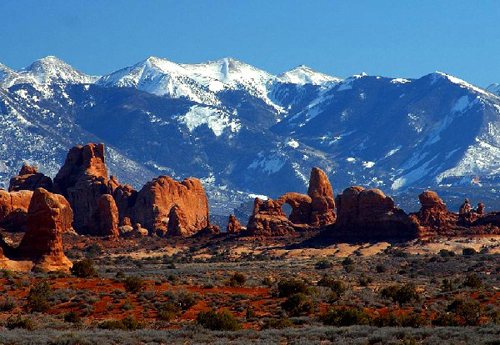
















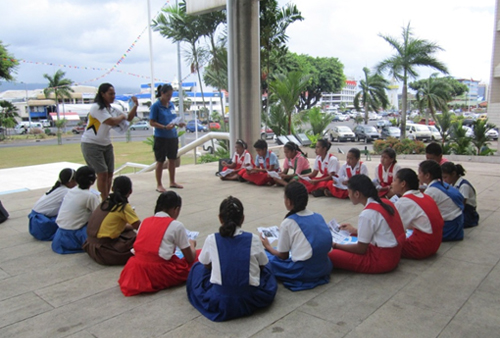






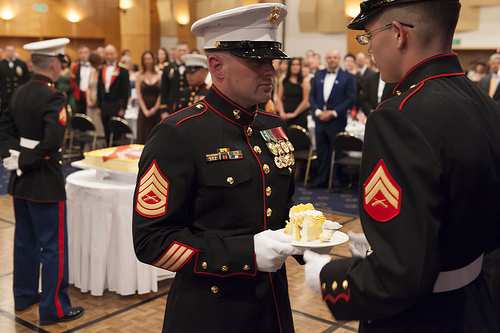
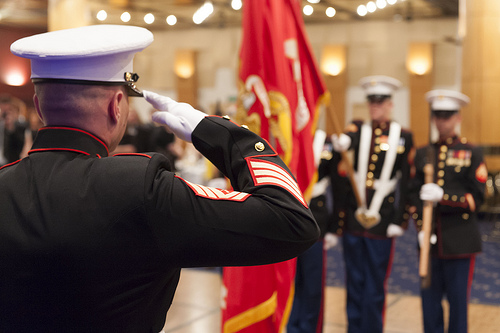
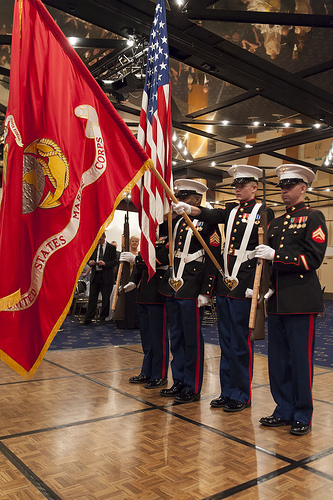





 View my Profile
View my Profile Connect with Wellington
Connect with Wellington Watch our Videos & Subscribe
Watch our Videos & Subscribe Watch our Videos on Vimeo
Watch our Videos on Vimeo Connect on GPlus
Connect on GPlus US Embassy NZ
US Embassy NZ


 Post Entries (RSS)
Post Entries (RSS)

